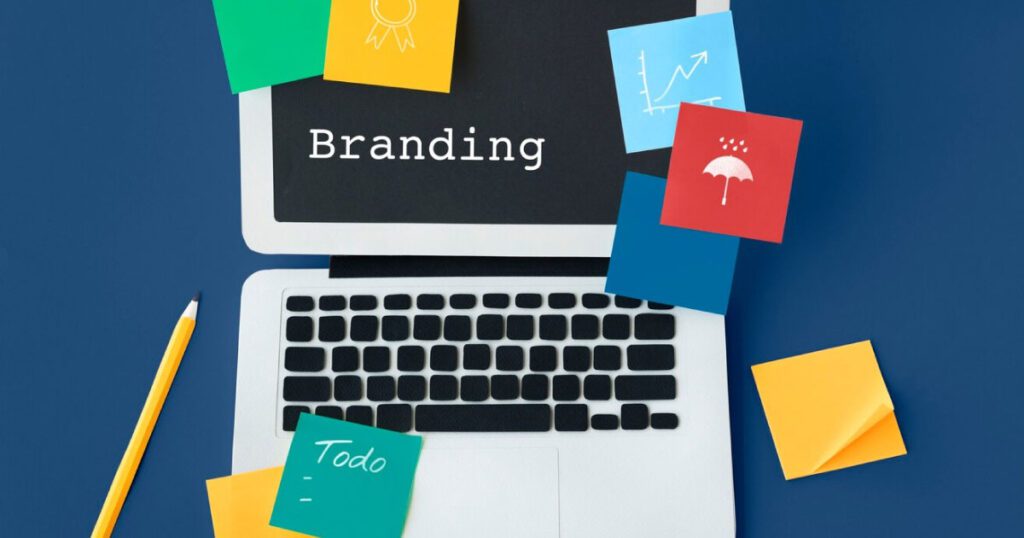Introduction
Portfolios are an excellent means of showcasing your skills and capabilities to potential employers and clients. They comprise of samples of your best works, documented professionally as proof of your relevant accomplishments in your field of work. Portfolios can be great conversation starters and sustainers whether in interviews, meetups with clients or social gatherings as they help you not just tell of your work but also show it.
Many industries, business owners and other professionals like artists, independent constructors, caterers, architects, interior decorators and so on, typically use portfolios to showcase their work to potential clients and the field of graphic design is of no exceptions. In the highly competitive design industry, where visuals wield immerse power portfolios make up the professional identity of graphic designers as it showcases their competencies and opens doors of opportunities for them.
However, having just a portfolio is not enough, it should be creative, and attention grabbing from the get-go and leave lasting impressions on whomever reviews it. Hence the need to explore creative graphic portfolio ideas that not only dazzle the eye but also resonate on a profound level. This article outlines some crazy killer graphic design portfolio ideas, delving into the art of presenting your works not just as static images but as vibrant stories that leap off the page or screen.
Understanding Your Audience
Communication goes beyond the visual elements in the graphic design landscape to the way in which our work is presented. Recognizing and understanding your target audience when presenting your work are crucial graphic design portfolio ideas. This is because tailoring your portfolio to niche is equal to speaking their language. It is all about intuitively grasping what they resonate with, captivating their attention and at the end of the day, compelling them to take action.
Thess customization are creative graphic design portfolio ideas not just for show or niceties but rather a strategic move and part of the best graphic design portfolio ideas that would set it apart. However, to further refine this move, you need to be able to distinguish between the different facets of your audience. That is, your clients, peers and employers as each group come with different expectations, motivations and perspectives. Therefore, having a good understanding of these will positively shape how you present and frame your work.
Clients seek proficiency in design and a clear understanding of their brand, objectives, and target audience. Employers assess candidates' suitability for their teams or projects, requiring a blend of creativity, technical skill, and adaptability. Peers serve as a source of inspiration and a platform to showcase innovative thinking and unique style. Understanding your audience is crucial, and your portfolio should resonate deeply with them. By carefully curating projects and narratives, your portfolio becomes a compelling dialogue that speaks directly to potential opportunities.
Portfolio Essentials

A graphic design portfolio serves as a compass to lead people through the creative terrain of your abilities and expertise and by exploring and utilizing beneficial graphic design portfolio ideas, you are set to go. Understanding and putting into practice three essential principles in relation to practical graphic design portfolio ideas—prioritizing quality over quantity, demonstrating diversity through a variety of work, and giving relevant context through project descriptions—will help to ensure that it serves as a beacon of your abilities. A carefully chosen collection of your best work, a portfolio demonstrates your command of design concepts as well as your creativity and technical expertise.
It's crucial to pick pieces that not merely reflect your abilities but also your design ethos. To demonstrate your versatility and adaptability, diversifying your work is the way to go. Therefore, incorporate a variety of projects, such as branding, web design, illustration, and motion graphics, to demonstrate your competencies to take on various challenges. Another ingenious graphic design idea is project descriptions. These are essential because they provide a behind-the-scenes look at your creative process by outlining the goals, client vision, and unique difficulties. A portfolio should convey your design philosophy as well as examples of your work.
Unique Presentation Ideas

In today's digital world, a unique design portfolio can stand out by incorporating innovative presentation ideas as one of your innovative graphic design portfolio ideas. A portfolio can be digital or physical and each comes with their advantages and disadvantages. Digital portfolios provide cost-effectiveness, accessibility, and interaction but may have technological problems and lack a physical feel.
Tactile experience, lasting impact, and customizing options are all provided by physical portfolios. However, they may have limited reach and higher production costs. Another one of the essential graphic design portfolio ideas is incorporating interactive elements, such as clickable prototypes, hover effects, image galleries, and dynamic transitions. These interactive elements can transform passive viewing experiences into interesting adventures.
Another one of the best graphic design portfolio ideas is leveraging cutting-edge tools like QR codes, augmented reality, and virtual reality are examples of essential graphic design portfolio ideas that makes use of modern technology that helps highlight your portfolio. These technologies highlight your design abilities and show that you approach your work with a forward-thinking perspective. The objective is to make an impact through an engaging digital experience, a well-designed hardcopy portfolio, or cutting-edge tech integration.
Personal Branding in Your Portfolio
Your portfolio is a platform for expressing your distinct design personality, not merely an exhibition of your work. Including personal style and identity in your portfolio is a great way to stand out from the competition while also showcasing your inventiveness. Creative and killer graphic design portfolio ideas include incorporating your personal brand into your portfolio, choose a color scheme that aligns with your style, choose typography that reflects your style, incorporate visual elements like graphics or illustrations, use photographs that complement your design, incorporate your personal logo or mark, and craft project descriptions that reflect your personal style.
You can demonstrate your design abilities and give the reader an insight into your identity as a designer by including these personal features. By building recognition, establishing credibility, promoting trust, and differentiating a distinctive personal brand, consistency in branding increases memorability. The identity of the designer becomes more recognizable, enhancing brand recall. A constant personal brand distinguishes the designer in a crowded market, but a polished presentation communicates professionalism and attention to detail. Designers may leave a lasting impression and entice people to engage with them by including distinctive aesthetics in their portfolio.
Storytelling Through Design

Design entails creating narratives that resonate with viewers in addition to the images. As part of the best graphic design portfolio ideas to have been to consider organizing your work as chapters in a design narrative, beginning with a great opener, moving through projects, and concluding with a standout piece to build an engaging portfolio. Projects should be arranged to organically guide the spectator, with color schemes, visual themes, or thematic components serving as bridges. To maintain a smooth flow and improve the storytelling experience, create transitions utilizing subdued design components or text.
Include case studies for important projects to keep visitors interested and highlight your problem-solving skills. Your portfolio is the ideal setting for forging emotional connections through design. Identify a unifying theme or concept, such as a design ethos or visual motif, and use audience-relevant imagery. This is one of the best graphic design portfolio ideas you can utilize. In project descriptions, explain the design's backstory, including its inspiration, difficulties, and emotional journey. To strengthen the emotional connection, take into account the user experience for digital portfolios. By incorporating emotion into your design narrative, you invite viewers to participate in an immersive experience that allows them to understand the depth and ardor that went into each project.
Testimonials and References
In the design field, demonstrating your abilities and getting endorsements from others can be even more effective. Your portfolio will gain more authority and legitimacy if you include references and testimonials. One of the rewarding graphic design portfolio ideas to put into practice is selecting essential testimonials that show particular qualities or skills, highlighting achievements, and designing the testimonials in a visually appealing way that complements your overall portfolio if you want to make the most of feedback and customer stories.
Include the name and position of the person providing the feedback in each testimonial to give it context. Attribute and contextualize each testimonial by including the name and role of the person giving the feedback and maintain authenticity by including constructive criticism and lessons learned. The inclusion of client testimonials or case studies offers an in-depth assessment of your design methodology, capacity for problem-solving, and the impact of your work.
Introduce the client's aims, challenges, and objectives to set the stage before documenting the journey, using images and multimedia, quantifying results, and reflecting on lessons learned. By presenting these client references and case studies, you highlight your design expertise as well as your capacity to comprehend and respond to the unique wants and difficulties of your clients. They act as testimonials from the real world, giving your portfolio more substance and authenticity and giving potential clients or employers more faith in your ability to produce top-notch design work.
Keeping It Updated
It's essential to regularly update your design portfolio in order to demonstrate your abilities, innovation, and development. As one of the vital graphic design portfolio ideas to apply, it demonstrates your capacity to adapt to the rapidly altering design world and to keep up with new trends, technologies, and methodologies. Additionally, it exhibits consistency by showing that you continually generate work of high caliber.
Furthermore, it shows that you are relevant to prospective customers or employers because current, pertinent work can boost your confidence in your capacity to handle their needs and issues. Recent upgrades provide you the chance to demonstrate a range of abilities, demonstrating your adaptability and competence in several design areas. It also acts as a visual chronology of your design development, showing how you moved from simpler projects to more complex ones.
Additionally, it enables you to showcase your aptitude for cutting-edge technologies and design trends, as well as your capacity for handling complex design problems.
Maintaining relevancy in a highly competitive industry like graphic design requires constant updating and trendspotting. Regular updates show customers or employers that you are not only up to date but also innovative. By regularly updating your portfolio, you keep a current and accurate picture of your talents and show that you are dedicated to learning and flexibility.
Practical Tips and Tricks
A strong graphic design portfolio must be simple to use, visually appealing, and easily accessible. Use high-quality photos, suitable file formats, compression, and consistent image quality to accomplish this. By creating the portfolio to fit numerous screen sizes and devices, testing it on a variety of devices, and staying away from Flash or complex animations, you can ensure that it is mobile-friendly. Make navigation easier for mobile users with logical menus and obvious calls to action. Use categories or filters to easily identify the work that interests them in the portfolio's organized menu layout.
Keeping the navigational style, the same on all pages to prevent confusion and guarantee a positive user experience is one of the great graphic design portfolio ideas to apply. Include contact information on a page that is easy to find and understand. Have others evaluate the portfolio's usefulness and look for any potential problems. Analytical tools can be used to track user activity and how they interact with the portfolio. By using these suggestions, you may present your work in the best light and give your audience a seamless and engaging experience. This focus on detail demonstrates your professionalism and commitment to delivering a first-rate user experience.
Common Pitfalls to Avoid
Avoid typical errors when creating a graphic design portfolio, such as having too much content, not giving enough context for the works that are shown, not exhibiting a distinct style or direction, and not showcasing a unified design aesthetic. Instead, place an emphasis on quality over quantity by carefully choosing the best examples of your work that best represent your abilities and sense of style while also taking into account relevance. Include project summaries, rationale for design decisions, and highlights of outcomes and impacts, such elevated website traffic, improved conversion rates, or gratifying client feedback.
Applying your distinctive style to numerous projects and industries will help you avoid design inconsistencies and show that you are flexible within your approach. Design trends shouldn't be used purely for their own sake; rather, they should complement your overall aesthetic and serve to strengthen your work's message. By avoiding these typical blunders, you may produce a portfolio that effectively communicates your abilities and professionalism while also showcasing your skills, style, and professionalism. Keep in mind that your portfolio serves as a window into who you are as a designer, so invest the time necessary to create an appealing and accurate portrayal of your skills.
Conclusion
To sum it up, a portfolio offers a glimpse into the world of graphic designers, serving as their magnus opus. That is, a living testament to their competencies, talents, creativity and dedication. Leveraging the killer graphic design portfolio ideas in this article not only makes your portfolio stand out from the numerous ones in the industry but also a benchmark for success in this field.
By understanding your audience, including the right portfolio essentials, incorporating unique presentation ideas, infusing personal aesthetics and identity into the design and being consistent with the brand with it, arranging pieces to take viewers on a journey instead of just presenting it just anyhow and knowing how to connect emotionally with viewers through design narratives.
Your portfolio should also include case studies, testimonials and references from clients, peers and previous and current employers essential graphic design portfolio ideas and helpful tips to help you make an impressive graphic design portfolio. Also, remember to keep it simple but with clear style and direction, updated, user friendly, optimized for the web and mobile devices, not overly crowded and with high quality images. Your portfolio is your canvas—paint it with the vibrant colors of your imagination, and let it be a beacon of inspiration for generations of designers yet to come.



